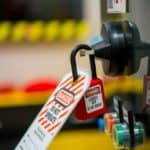Most business and management professionals are familiar with the core tenets of lean manufacturing, even if they don’t work in a factory where the principles were originally founded.
However, lean maintenance within asset-intensive industries remains a relatively unexplored concept. By implementing lean maintenance workflows inspired by the original manufacturing philosophy, it’s possible to eliminate bottlenecks in repair operations and therefore realize significant improvements across the organization.
Origins of Lean Maintenance
Anyone familiar with lean principles probably knows the story behind its creation and development and how it played a key role in the rise of Japanese conglomerate Toyota from a humble textile maker to one of the world’s largest manufacturers. A core concept within this process is the productivity mantra of “just in time,” which requires focusing on doing the exact amount of work needed to complete a task. This is accomplished not only by increasing speed but also through the reduction of waste in its many forms: excessive movement, micromanagement, too many spare parts, and the like.
In the world of enterprise asset management, just-in-time is a perfect fit for maintenance, repair, and operations teams who want to improve their workflow and processes. In a perfect just-in-time world, maintenance teams would know exactly how much time, effort and material needs to be spent on any given project. They would also be able to continuously monitor their performance to look for remaining bottlenecks and improve processes even further to eliminate them accordingly.
Why Lean Maintenance Matters
Adopting a lean maintenance workflow confers several benefits in terms of increased uptime and asset output, as well as lower costs related to downtime and workforce management. However, implementing lean principles and then constantly improving them is a tall task in and of itself.
For that reason, more executives and managers in asset-intensive organizations are relying on strategic partnerships to get the ball rolling toward a truly lean maintenance workflow. SEAM Group helps maintenance teams adopt lean workflow practices by performing a full analysis of their current operations, identifying gaps in productivity and developing simulations to understand how to overcome these challenges. This provides the foundational knowledge needed to get a process improvement project off the ground, as well as enabling the constant waste elimination that forms the core of the lean philosophy.
Adopting lean maintenance principles in your organization is an important first step in fostering a cohesive work environment.





